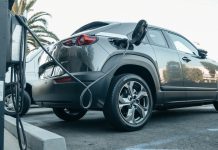It’s no secret that new and used vehicles have seen significant price increases since the start of the pandemic. And it’s turning out that electric vehicle manufacturers are not immune from this trend. This phenomenon may have far-reaching effects on the adoption of electric vehicles, possibly impacting all stakeholders — including dealers. Where are the price hikes happening, and what could this possibly mean for the future of EVs?
Numerous EV Brands are Raising Prices
Both notable electric vehicle manufacturers like Rivian and Tesla are increasing the price of their electric vehicles. The former is raising their prices by about 20%, while Tesla is increasing the costs of their cars by 5 to 10%. For example, Tesla’s lowest-cost vehicle, the Model 3 RWD, has increased from $44,990 to $46,990, while their most expensive car is seeing a price hike from $126,490 to $138,990.
The price increases don’t just stop with more well-known and domestic brands. Newcomers like Lucid Motors may take on a rise in prices, according to their CEO Peter Rawlinson. At the same time, foreign automakers like Chinese electric vehicle automaker, Xpeng will increase their prices between $1,587 and $3,143. The cost increases of electric vehicles seem inevitable and widespread, but what’s leading to these considerable price hikes?
The Cause for the Price Hikes
The price increases are a combination of a variety of factors. For Tesla, Rivian, and others, price hikes are likely due to inflation, an increase in the cost of raw materials, and supply chain disruptions.
Also, specific supplies pivotal in electric vehicle production like steel, palladium, and nickel have gone up due to the current invasion of Ukraine by Russia, and a continued lack of semiconductors is also leading to production issues resulting in rising costs.
How Might This Impact EV Adoption?
While the profile of EVs has been rising over the years, a gradual increase in gas prices has spurred more interest and demand. According to forecasts from AutoPacific, an automotive marketing research and product-consulting firm, electric vehicle purchases in the United States could rise to 700,000. This is a considerable increase from last year’s 491,000 EV units sold.
However, a rise in EV prices may likely cool some demand, especially if gas prices begin to fall. The price of a new electric vehicle is already over $60,000 as of February of this year. Dealers will have to continue to decide how they want to deal with the rising EV cost, as they manage higher markups and determine the discounts and incentives needed to move these cars off lots. As a result, EVs may become an option only for buyers with more money to spend — at least in the short term.
Also, EV automakers and state governments will likely have the most complex choices about new EV affordability as we get closer to state phase-outs of new gasoline-powered vehicles within the next decade. However, if battery costs drop for EVs in the next few years, the transaction costs will fall, sparking even more demand.
Ultimately, the volume of demand will likely fluctuate with trends like gasoline prices and raw material costs; if the latter begins to fall, the widespread adoption of EVs will likely continue as brands like Tesla strive to increase their market share with drivers.
Did you enjoy this article from Chanell Turner? Please share your thoughts, comments, or questions regarding this topic by submitting a letter to the editor here, or connect with us at newsroom@cbtnews.com.
Be sure to follow us on Facebook and Twitter to stay up to date or catch-up on all of our podcasts on demand.
While you’re here, don’t forget to subscribe to our email newsletter for all the latest auto industry news from CBT News.










